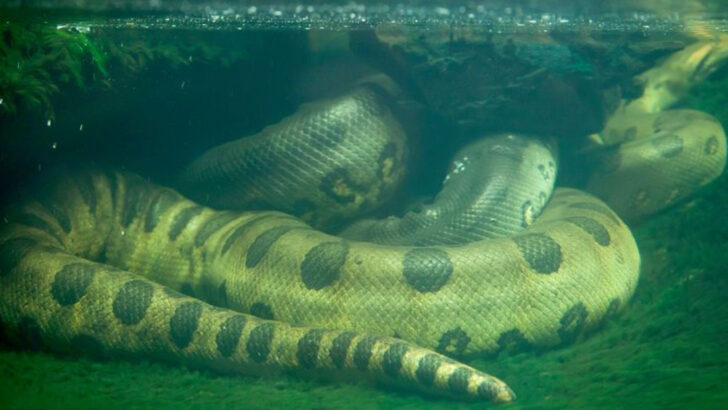The largest anaconda ever recorded isn’t just big—it’s absolutely mind-blowing. Stretching to lengths and sizes that defy belief, this snake has stunned scientists and wildlife enthusiasts alike, leaving a trail of mystery in its wake.
This massive serpent isn’t just a giant; it’s a living marvel, with unique behaviors and astonishing traits that have captured the imagination of many. What makes it so special? Prepare to be amazed as we uncover 14 jaw-dropping discoveries about this colossal creature.
From its sheer power to its unexpected role in the ecosystem, these insights paint a picture of a creature that’s both fascinating and vital to the world it inhabits. Buckle up—you’re about to step into the world of the largest anaconda ever recorded.
Massive Length
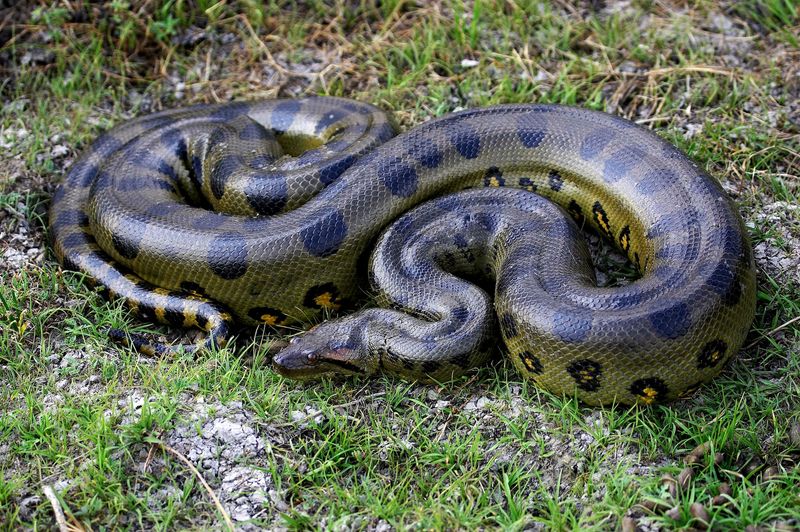
The largest anaconda ever recorded measured an astonishing length, surpassing expectations and setting new records. This magnificent creature stretched over 30 feet, making it a sight to behold for anyone fortunate enough to encounter it.
Such a size not only impacts its habitat but also influences its prey selection. This behemoth of a snake thrives in dense, wet environments, often camouflaging effortlessly among the flora.
Its length is not just a testament to its survival capabilities but also an impressive feature that continues to intrigue researchers and onlookers alike. Witnessing its grandeur is truly awe-inspiring.
Incredible Weight
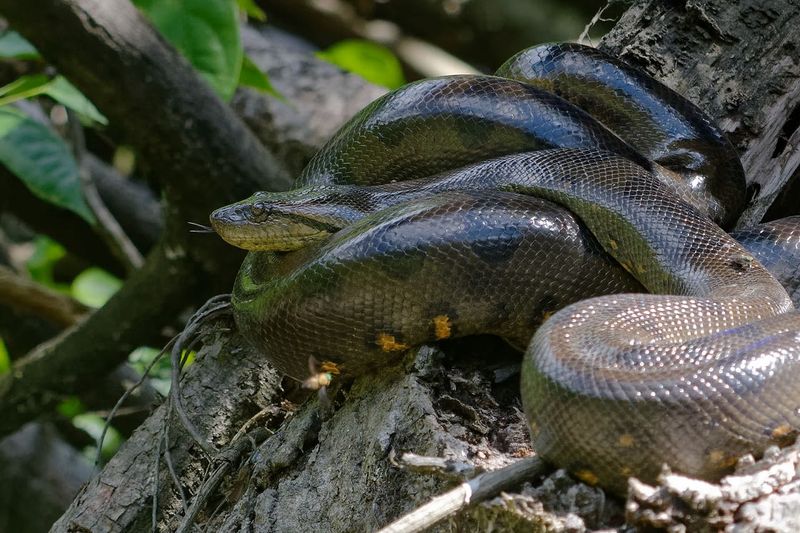
Weighing in at a staggering 550 pounds, this anaconda is a force of nature, dominating its environment with unmatched presence. Its weight is a critical factor, both for hunting and mobility.
Despite its bulk, the anaconda moves with surprising agility, a necessary trait for catching prey. The sheer mass of the snake also plays a role in regulating its body temperature, aiding in survival.
Observations have shown how this weight affects its interaction with the environment, making it a fascinating subject for further study in snake physiology and behavior.
Unique Coloration
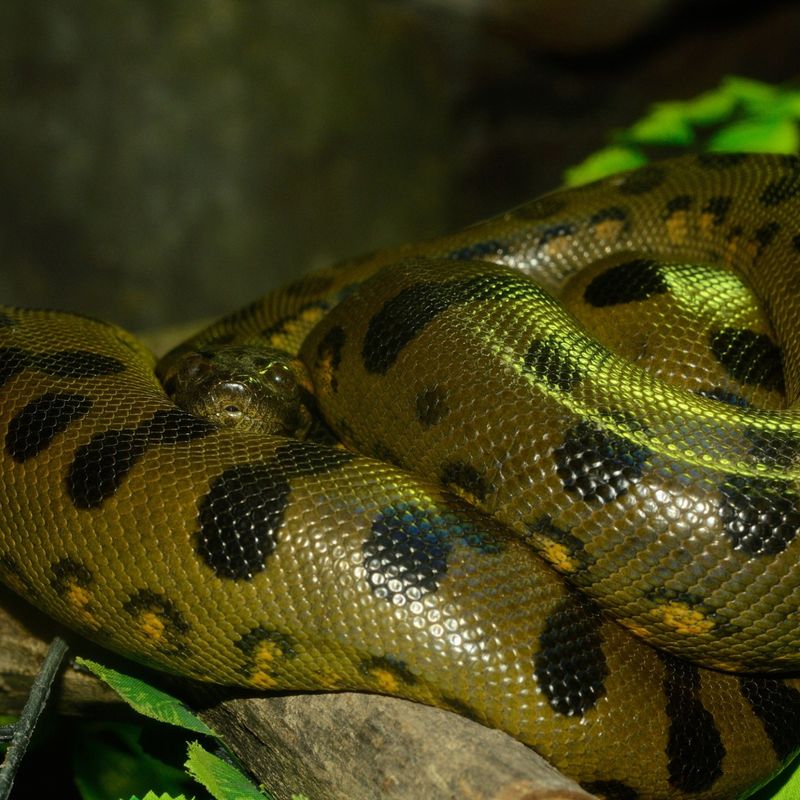
The anaconda’s unique coloration is more than just skin deep. Its intricate pattern of dark greens, browns, and blacks provides perfect camouflage in its jungle habitat.
This natural disguise protects it from predators and enables it to ambush prey effectively. The coloration is not merely for aesthetics; it is a critical evolutionary adaptation.
Each scale’s hue tells a story of survival and adaptation, making the anaconda a marvel of nature’s design. Observers are often left in awe at how seamlessly it blends into its environment, a true master of stealth.
Record-Breaking Age

This anaconda isn’t just remarkable for its size; it has also reached an unprecedented age, living over 40 years in the wild. Such longevity is rare among its kind and speaks volumes about its adaptability and resilience.
The snake’s age offers insights into its life history, shedding light on its growth patterns and survival strategies. Its ability to thrive for so long reflects the delicate balance it maintains with its ecosystem.
Understanding the factors contributing to its longevity could provide valuable information for conservation efforts and ecological studies.
Powerful Predator
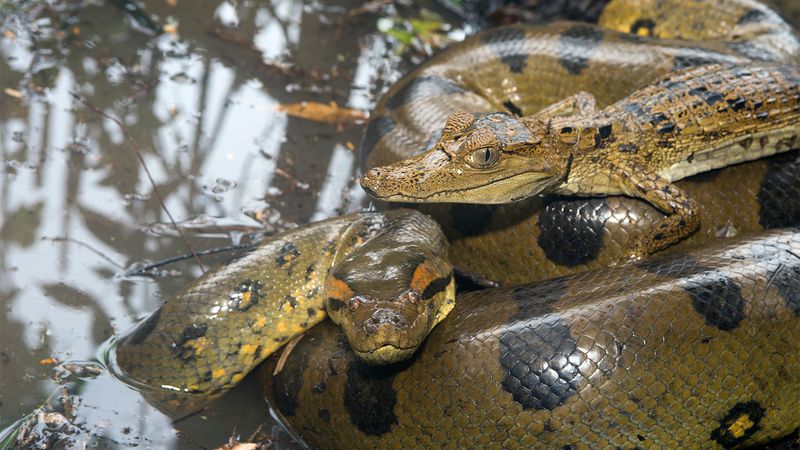
Among the top predators in its environment, this anaconda exhibits astonishing strength and technique when hunting. Its preferred prey includes caimans and wild pigs, showcasing its dominance.
The snake employs a method of constriction, suffocating its prey with unyielding force. This method is not only effective but speaks to the anaconda’s evolutionary prowess.
Observing this predator in action reveals the balance it upholds within its habitat. Such predatory behavior offers a glimpse into the intricate workings of the food chain, emphasizing the snake’s role as a key ecological player.
Mysterious Behavior
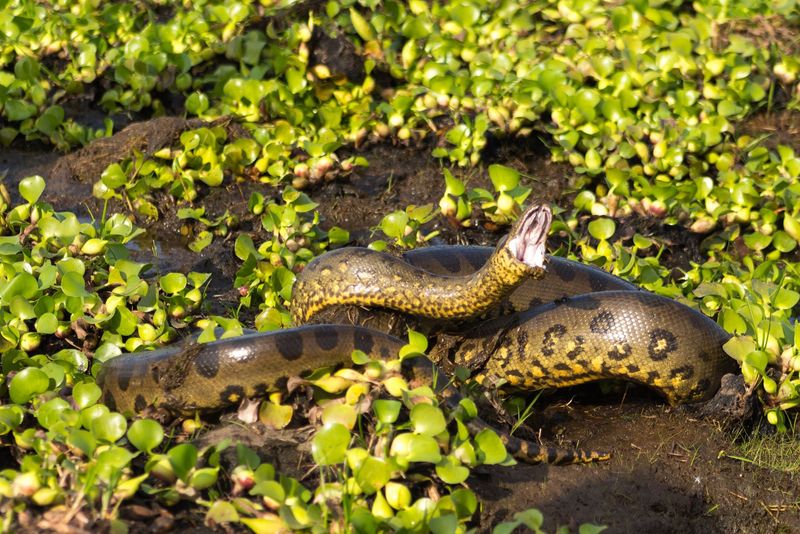
This anaconda has exhibited behaviors that defy typical understanding, sparking curiosity among researchers. Its tendency to bask even on cloudy days, a behavior not commonly observed, suggests unique thermoregulation needs.
These behavioral nuances might be adaptations to specific environmental conditions or individual traits. Such mysteries add to the intrigue surrounding this giant snake, prompting further study to decipher its habits.
Understanding these behaviors could reveal new aspects of anaconda ecology, contributing to broader knowledge about these enigmatic reptiles and their role within their ecosystems.
Diverse Diet
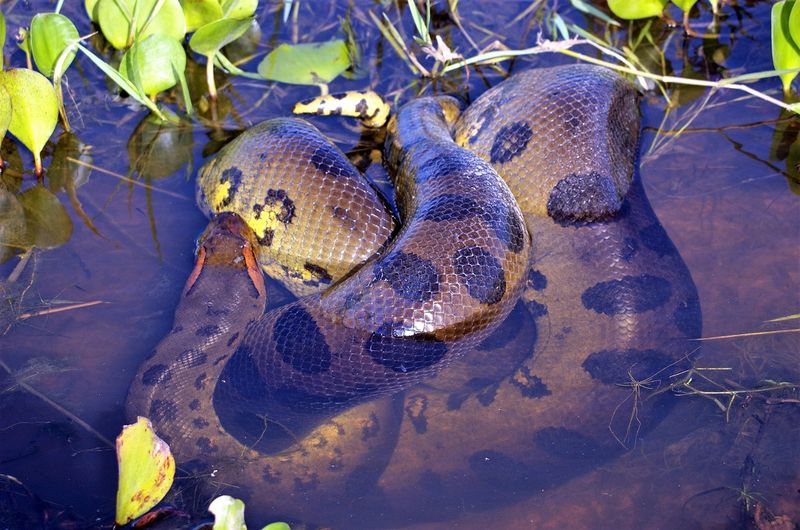
The diet of this anaconda is as varied as its habitat, ranging from birds to mammals. This dietary diversity is crucial for its survival, allowing flexibility in prey choice based on availability.
Its ability to tackle various prey sizes showcases its adaptability and hunting prowess. Such a diet ensures the snake can thrive even when typical prey is scarce.
This dietary versatility highlights the anaconda’s place in maintaining ecological balance, shaping its community’s dynamics. Research into its feeding habits can provide insights into food web interactions and ecosystem health.
Adaptation to Climate Change
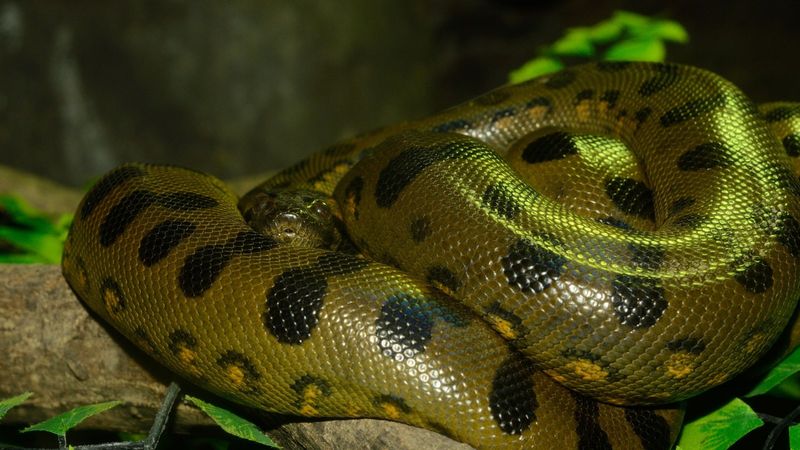
As climate change alters habitats, this anaconda demonstrates remarkable adaptability to shifting environments. It has been observed thriving in altered landscapes, showcasing its resilience.
This adaptability ensures its survival amid rising temperatures and changing precipitation patterns. By altering its behavior and habitat preferences, the anaconda continues to find ways to sustain itself. Such adaptability is crucial for its long-term survival as it navigates through transformed ecosystems.
The anaconda’s response to climate change serves as a valuable case study for understanding the impacts of environmental shifts on species.
Remarkable Swimming Skills
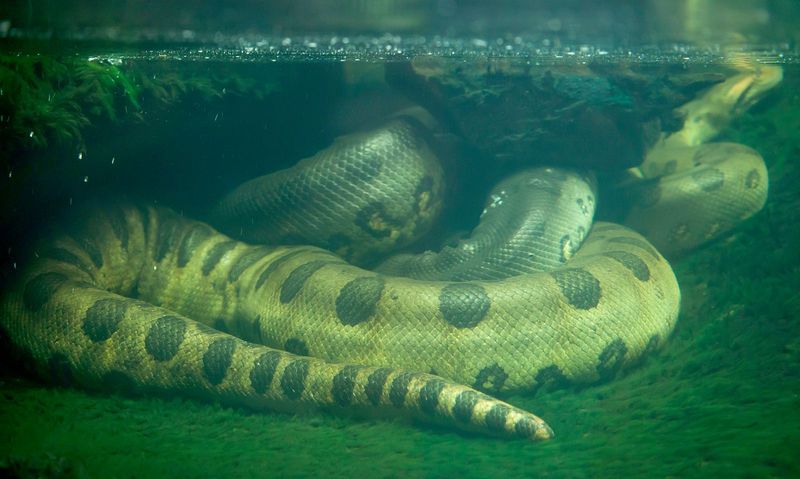
The aquatic prowess of this anaconda is a key aspect of its survival strategy. Its ability to move swiftly and stealthily through water aids in hunting and escaping threats.
The snake’s streamlined body and muscle power make it an adept swimmer, capable of covering long distances. This skill is not only essential for capturing aquatic prey but also for migration between different habitats.
Observing its swimming techniques can reveal much about its ecological role and the adaptations that allow it to thrive in both water and land environments.
Unusual Social Interactions
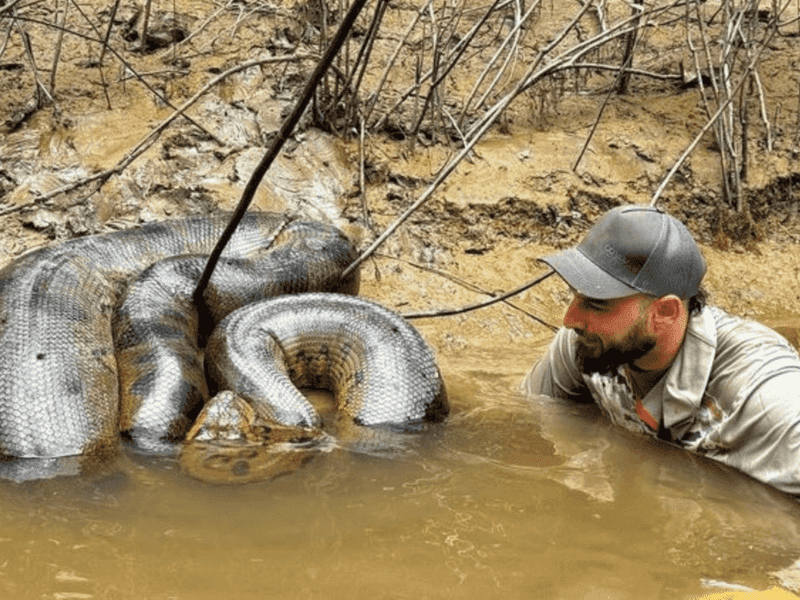
Typically solitary, this anaconda has shown atypical social behaviors, engaging in interactions with others of its kind. These interactions, rare among anacondas, suggest a complex social structure not commonly acknowledged.
This could be a response to environmental pressures or a previously underestimated aspect of their ecology. Such social behaviors might provide advantages in mating or territory establishment.
Exploring these interactions can lead to a deeper understanding of anaconda social dynamics and their implications for the species’ evolutionary strategies. This discovery adds a new layer to our understanding of these snakes.
Impact on Ecosystem
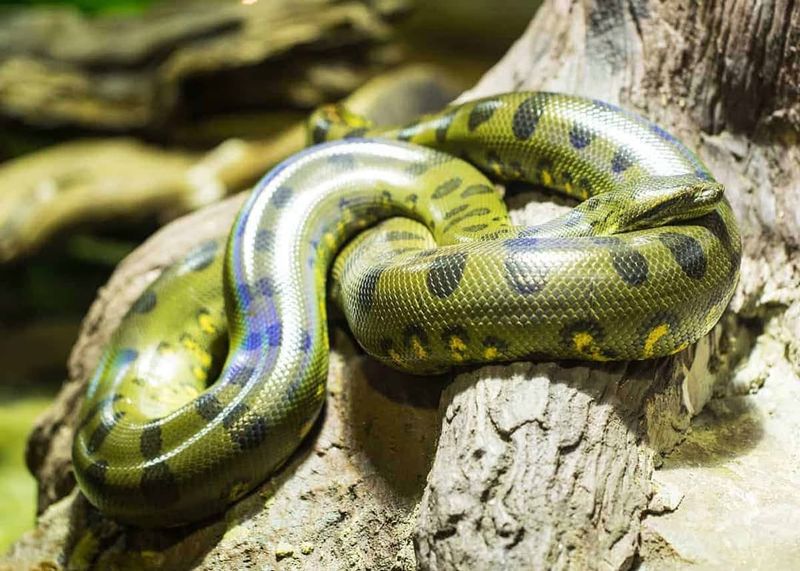
The presence of this giant anaconda significantly influences its ecosystem. As a top predator, it regulates prey populations, maintaining balance within its community.
Its interactions with prey and rivals shape the dynamics of the ecosystem, affecting biodiversity. The anaconda’s role in nutrient cycling, through its feeding habits, also contributes to the health of its environment.
Understanding its impact on the ecosystem highlights the interconnectedness of species and the importance of conserving such apex predators. This knowledge can guide conservation strategies to preserve biodiversity and ecological integrity.
Natural Camouflage Skills
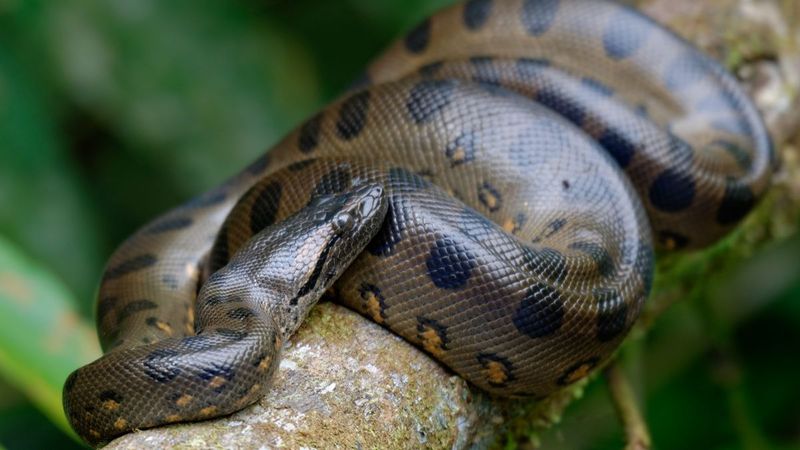
This anaconda’s natural camouflage is a marvel of evolution, allowing it to vanish amidst the dense foliage of its habitat. Its ability to remain unseen is crucial for both ambush hunting and avoiding detection by potential threats.
The snake’s coloration and pattern enable it to merge with its surroundings, an essential survival strategy. This camouflage is not just a physical trait but a behavioral adaptation, as the anaconda expertly uses its environment to its advantage.
Observing this skill offers insight into the evolutionary pressures that have shaped this predator’s stealth capabilities.
Conservation Challenges
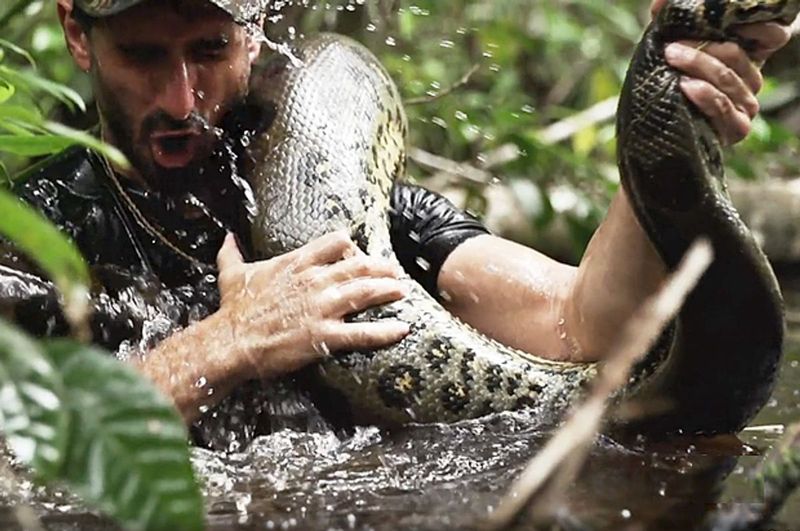
Despite its dominance, this anaconda faces numerous conservation challenges. Habitat destruction and human encroachment threaten its existence, altering the delicate balance it relies upon.
Conservation efforts are crucial to preserve its habitat and ensure this magnificent creature’s survival. Understanding the challenges it faces allows for informed strategies to mitigate threats and promote coexistence.
Protecting its environment not only benefits the anaconda but also countless other species sharing its ecosystem. Addressing these challenges requires collaboration and commitment to safeguarding biodiversity and the natural world.
Cultural Significance
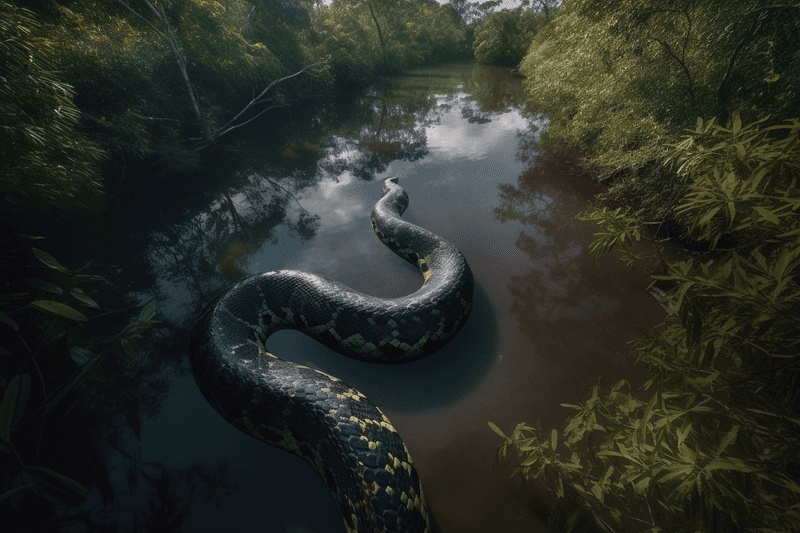
Throughout history, anacondas have held a place of reverence in various cultures, symbolizing power, mystery, and transformation.
This giant anaconda, through its impressive presence, continues to captivate and inspire, becoming a part of folklore and local narratives. Its image has been used in rituals and storytelling, reflecting its significance in cultural heritage.
Understanding its role in culture offers a glimpse into how humans perceive and value such creatures. This cultural connection underscores the importance of preserving not just the species but also the traditions and stories it embodies.

